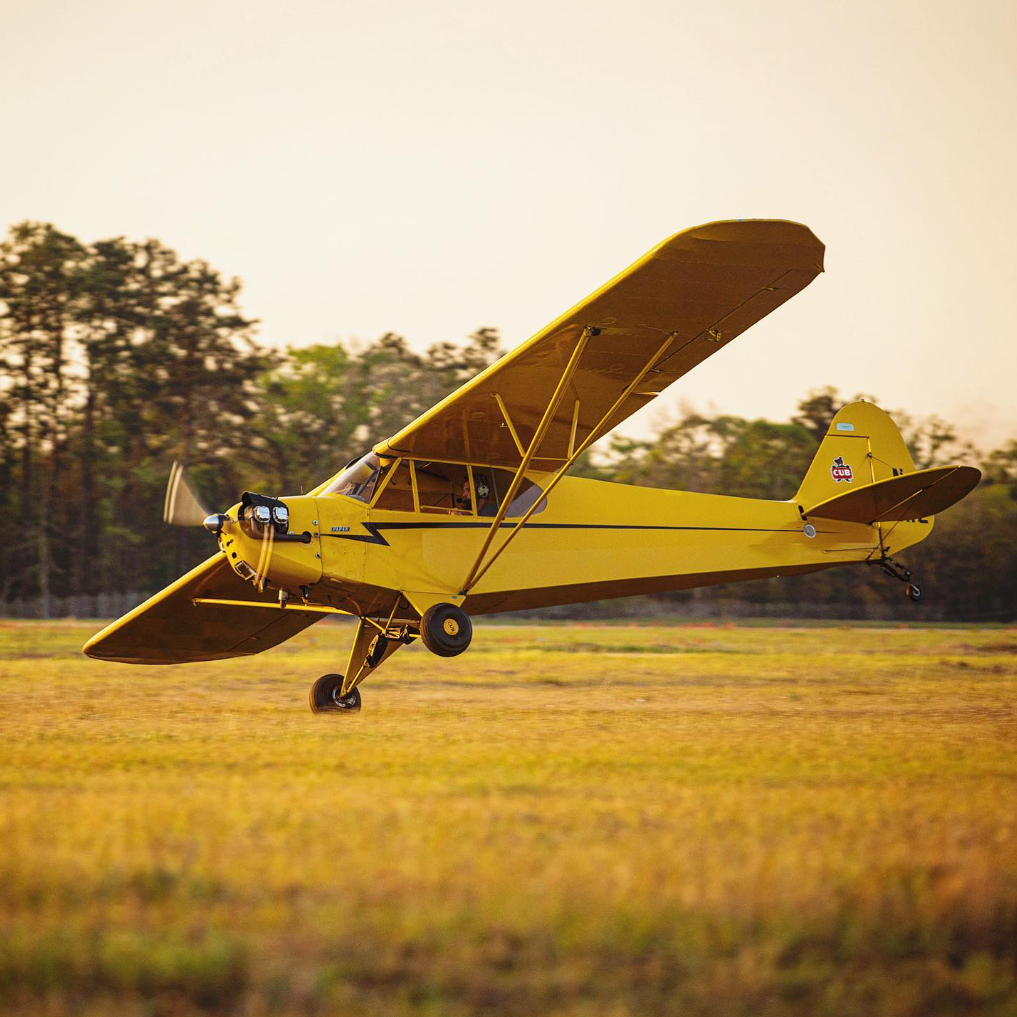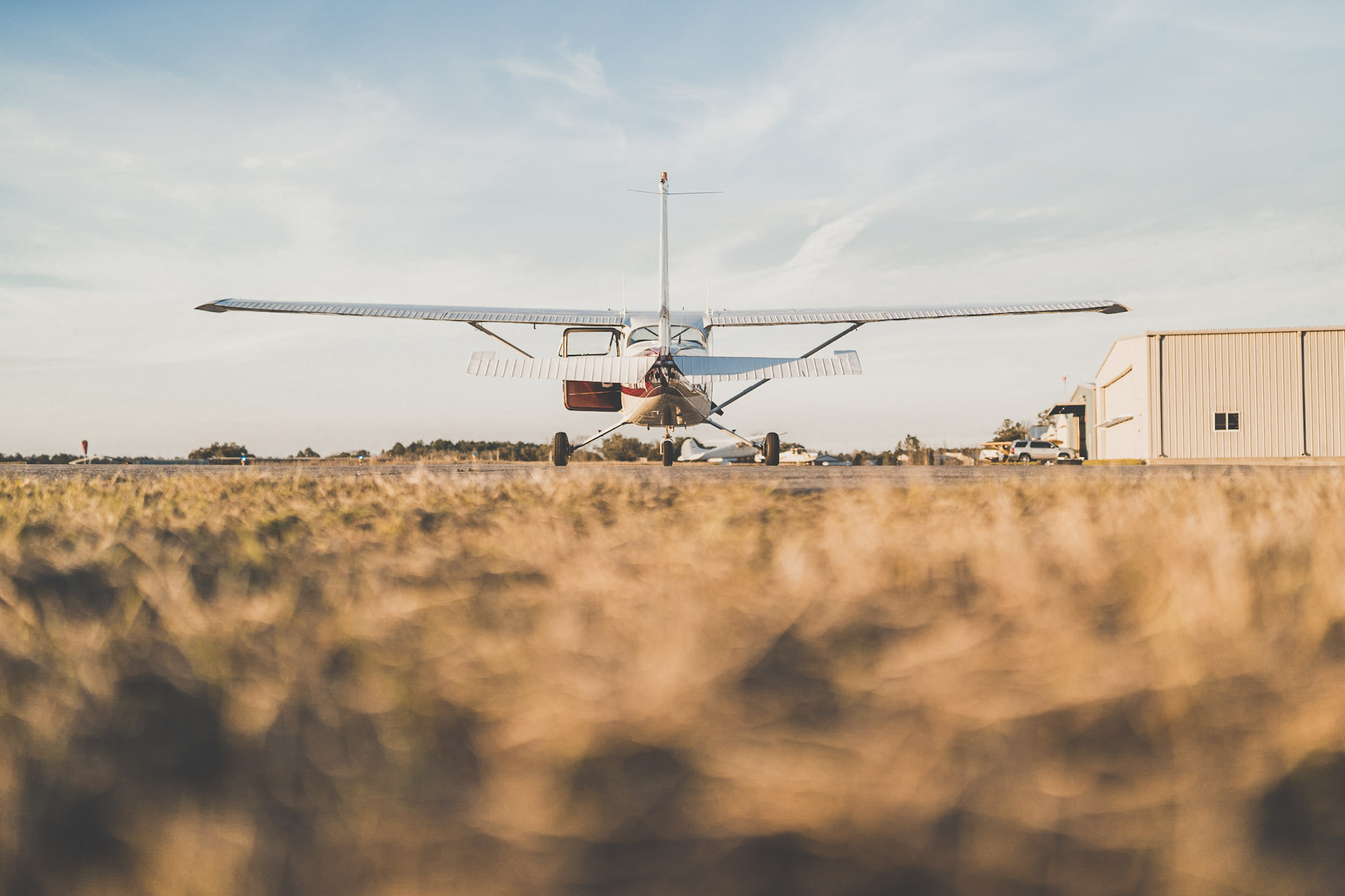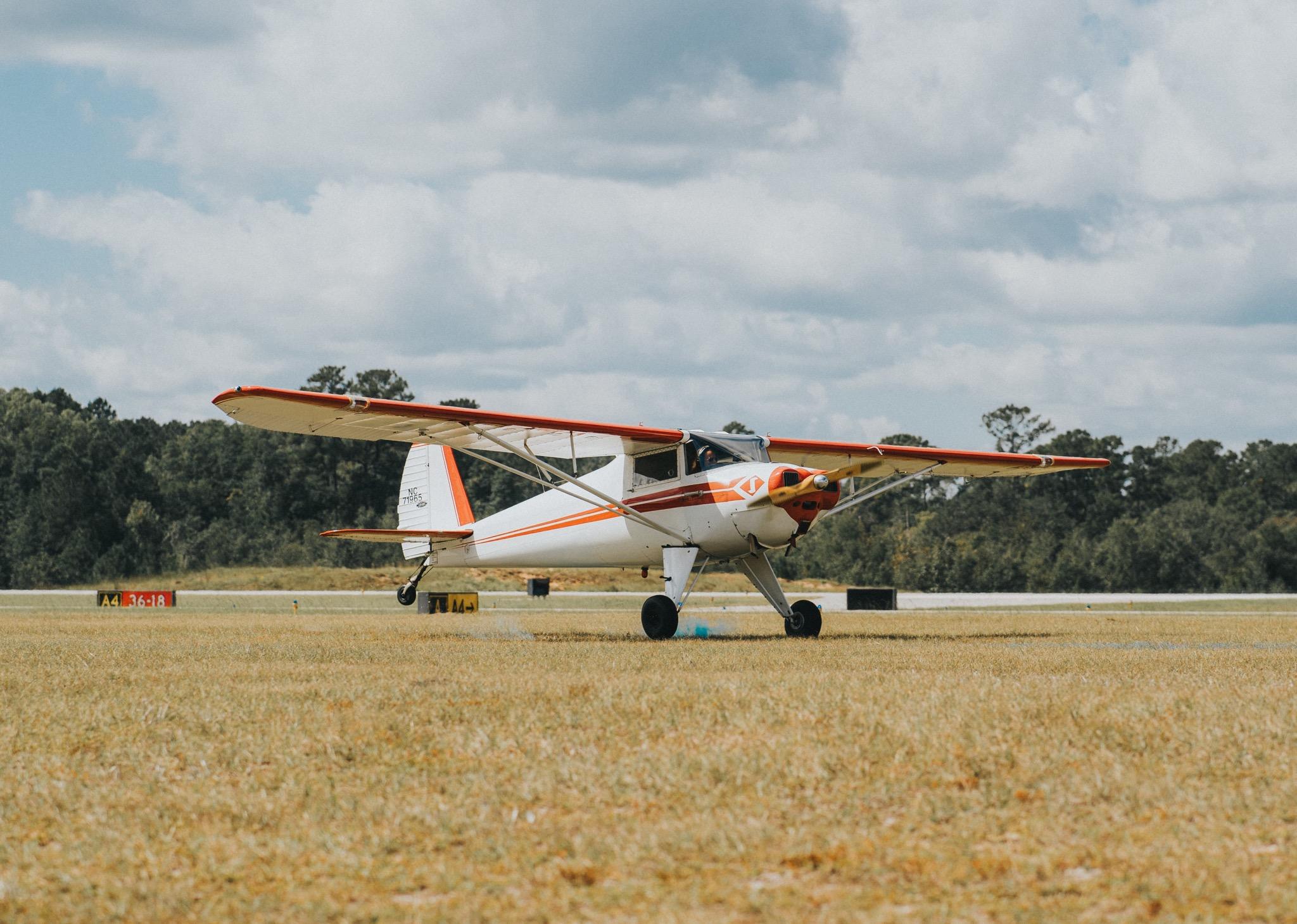When taking off and landing, you’ve got 1 job: to pick a line and track it straight.
The first skill you most hone is yaw control—learning to use your rudder pedals to keep your nose tracking straight. Your goal is to internalize that the rudder pedals control where the nose is pointing.
Watching where the nose is pointing must become a habit, allowing you to catch any deviations from straight and correct them with immediate rudder input.
One of my favorite exercises to practice yaw control is doing zig zags while taxiing. The drill allows you to notice how the nose moves as you apply rudder inputs to capture and track your next line. This drill prepares you to respond to any deviations from straight with the right amount of rudder when taking off and landing.
Now that you can keep your nose straight, let’s talk about how to stay on your line (e.g. runway centerline) when you’ve got a crosswind.

What holds the airplane over the runway centerline in the air?
While airborne, any crosswind will strike the airplane sideways, creating a lateral force that causes the airplane to drift sideways.
To stay in position, we must counteract this lateral force with an equal and opposing force.
Well, someone who understood aerodynamics found a simple solution: You can use lift to oppose the wind if you change the airplane’s bank angle.

What is the proper bank angle? How much bank do you need?
Whatever it takes to stop lateral drift and maintain your desired position. When the lift lateral force is equal and opposite to the wind lateral force, the airplane stops drifting sideways. As a pilot, all you have to do is find the bank angle that will do the work. Sample bank angles and once you find it, hold it precisely!
A common mistake pilots make is leaning as they bank. Doing so is like changing the position of the horizon, making it really, really hard to know your bank angle. If you want to get good at crosswind takeoffs and landings, get comfortable with the airplane being at a bank angle.

Fly the airplane until it is tied down
Transitioning from going airborne to the ground requires us to keep flying. Keep flying means you’ve still got to hold the bank angle that is working. When your wings are no longer flying, you will know as you’ll be unable to maintain bank angle even with full aileron into the wind, causing the higher wing to drop. When that happens you are now taxiing, requiring you to still hold wind correction inputs.
Develop wind awareness
Don’t use the windsock or weather report as your only source of wind. The wind is not a number, it’s interacting with you! Find out how the wind is interacting with stuff (e.g. the grass, flags, trees, smoke, your own drift, your flight controls, etc.)
On approach, the best wind indicator is when you can see the airplane drifting because its effect on you gets real. You can determine wind direction and strength by the amount of heading change it takes to correct for the drift. This heading change is known as the ‘wind correction angle’ or ‘crab angle,’ and it’s the most efficient way to correct for the wind while airborne, because the wings are kept level.
As you descend, the wind may change, requiring you to adjust your wind correction angle to stay on the runway centerline.
As you approach the ground, it’s time to align your nose with the runway centerline and use bank angle to hold your position instead. For beginners, making this transition at 200–100 feet above the ground works well. Eventually, you can make the transition just a few feet above the ground.
Respect the wind
Nailing crosswind takeoffs and landings is all about understanding your capabilities and the physics at play.
We recommend a buildup approach. Start with 5 knots, then 7 knots, stay at 10 knots for some time, and finally challenge yourself to the limit specified in your airplane flight manual.
Share your milestones on the Fly ORKA app. We can’t wait to celebrate when you nail 5-knot, 7-knot, 10-knot, 15-knot, or even 25-knot crosswind takeoffs and landings! Yeah, the big birds are certified to cope with 25 knots.
Download the Fly ORKA app on Android or iOS and document bragging rights.


